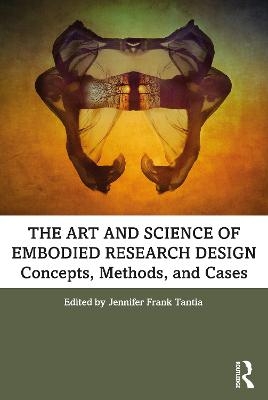
The Art and Science of Embodied Research Design
Routledge (Verlag)
978-1-138-36708-1 (ISBN)
The Art and Science of Embodied Research Design: Concepts, Methods, and Cases offers some of the nascent perspectives that situate embodiment as a necessary element in human research. This edited volume brings together philosophical foundations of embodiment research with application of embodied methods from several disciplines.
The book is divided into two sections. Part I, Concepts in Embodied Research Design, suggests ways that embodied epistemology may bring deeper understanding to current research theory, and describes the ways in which embodiment is an integral part of the research process. In Part II, Methods and Cases, chapters propose novel ways to operationalize embodied data in the research process. The section is divided into four sub-sections: Somatic Systems of Analysis, Movement Systems of Analysis, Embodied Interviews and Observations, and Creative and Mixed Methods. Each chapter proposes a method case; an example of a previously used research method that exemplifies the way in which embodiment is used in a study.
As such, it can be used as scaffold for designing embodied methods that suits the researcher’s needs. It is suited for many fields of study such as psychology, sociology, behavioral science, anthropology, education, and arts-based research. It will be useful for graduate coursework in somatic studies or as a supplemental text for courses in traditional research design.
Jennifer Frank Tantia, PhD, is a somatic psychologist and dance/movement therapist in New York City, USA. She has taught embodied research at several universities in the United States, and guest lectures internationally.
Part I: Concepts in Embodied Research Chapter 1: Embodied Research Design: A Transformational Paradigm in Scientific Discovery Chapter 2: Open and Reflective Research: Methodological Reflections on the Importance of Body Awareness in Qualitative Research Chapter 3: The Concept Of "Felt Sense" In Embodied Knowing and Action Chapter 4: Embodied Data: Toward a Vocabulary for Somatic and Movement Experience Chapter 5: Ethical Considerations in Embodied Research; Part II: Methods and Cases; Somatic Systems of Analysis Chapter 6: Methods for Measuring Embodiment, An Instrument: The Multidimensional Assessment of Interoceptive Awareness (MAIA) Chapter 7: Empirical Evidence of the Embodiment Awareness Changes in Somatic Focused Gestalt Psychotherapy Chapter 8: Somatic Phenomenology: Maps of Body-Felt Experience; Movement Systems of Analysis Chapter 9: The Three Pillars of Movement Observation and Analysis – A Brief Introduction to the LMA, KMP and MPI Chapter 10: Embodied and Nonverbal Indices of Stress in Intergenerational Transmission Chapter 11: The Skillful Analyst: Investigating, Analyzing, And Reflecting on Movement Behavior Through Embodied Knowledge; Embodied Interviews and Observations Chapter 12: Ethnomethdologically Informed Ethnography: Recognising the Potential and Limitations of The Researcher’s Body as Tool for Exploring Embodied Practice Chapter 13: Beyond Interpretative Phenomenological Analysis: Using Body Awareness and Mindfulness Meditation Practices to Research Body Psychotherapy Chapter 14: The Body-Focused Interview: Explicating the Implicit in Embodied Research Chapter 15: Embodied Writing Research Applications: Giving the Body "Voice" Through the Vehicle of Words; Creative and Mixed Methods Chapter 16: Body Stories: Researching and Performing the Embodied Experience of Oppression Chapter 17: The Somatic Impact of War and Flight on the Agent Bodies of Refugee Women in Germany: A Mixed-Method Approach Including Movement and Body Image Sculptures Chapter 18: Aesthetic Answering: A Method of Embodied Analysis and Arts-Based Research in Creative Arts Therapies Chapter 19: Mixed Methods for Evaluating Embodied Processes in Higher Education
| Erscheinungsdatum | 21.03.2020 |
|---|---|
| Zusatzinfo | 17 Tables, black and white; 8 Line drawings, black and white; 3 Halftones, black and white; 12 Illustrations, black and white |
| Verlagsort | London |
| Sprache | englisch |
| Maße | 156 x 234 mm |
| Gewicht | 420 g |
| Themenwelt | Sozialwissenschaften ► Soziologie ► Empirische Sozialforschung |
| ISBN-10 | 1-138-36708-7 / 1138367087 |
| ISBN-13 | 978-1-138-36708-1 / 9781138367081 |
| Zustand | Neuware |
| Haben Sie eine Frage zum Produkt? |
aus dem Bereich


